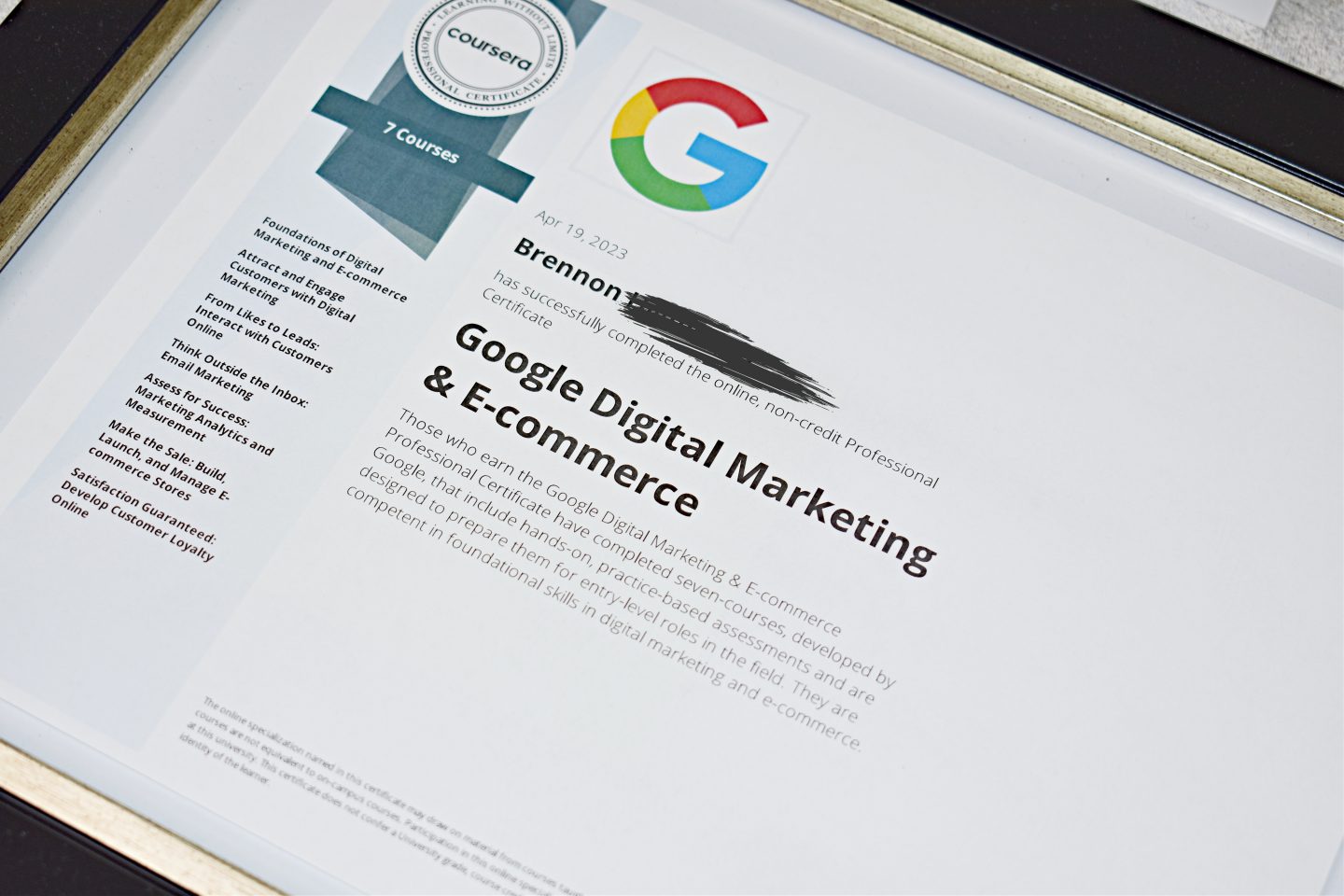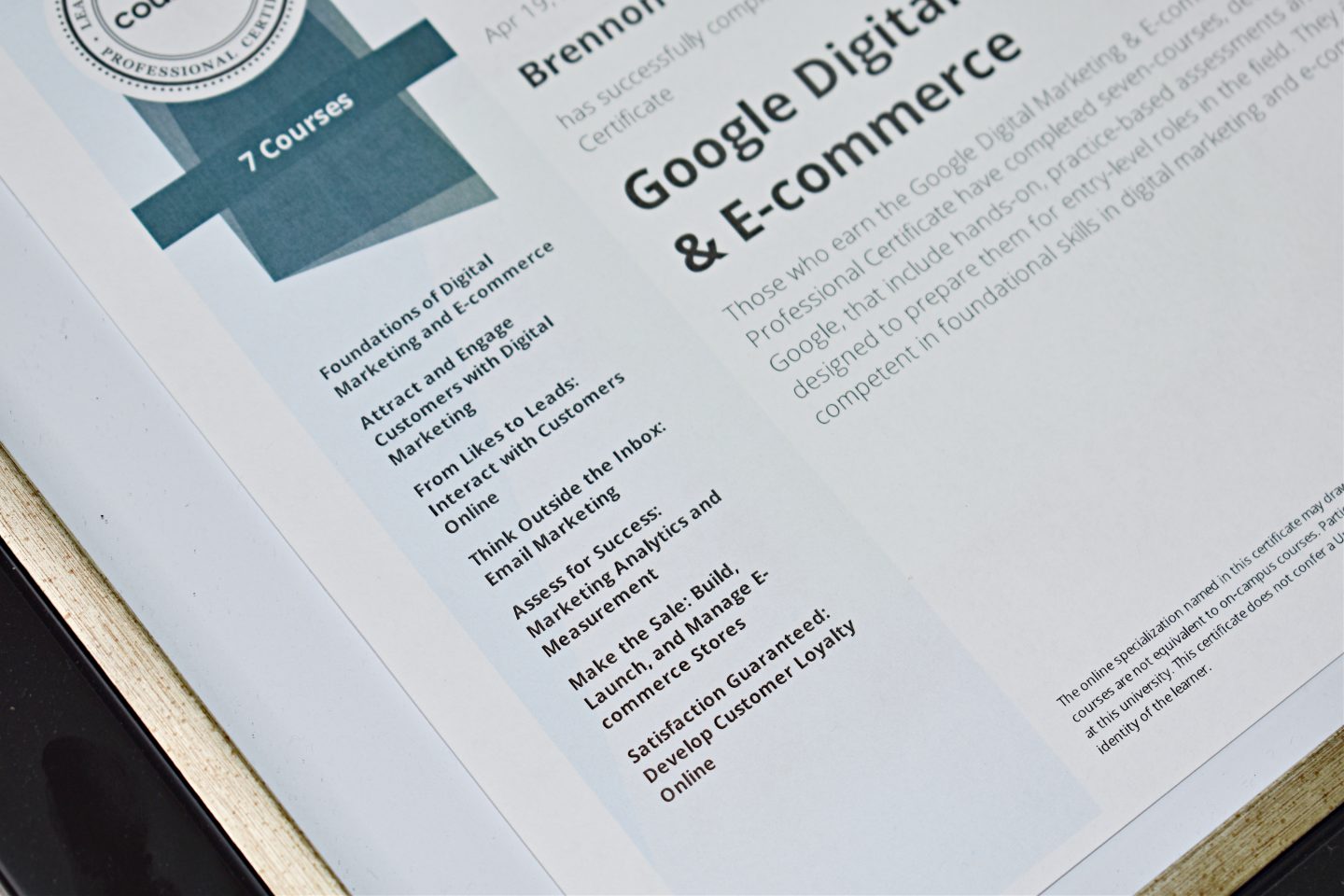
At the start of the new year, one of my goals was to complete the Google Digital Marketing & E-commerce Certificate course through Coursera. After months of playing with the idea, I finally made the commitment to enroll in the course and complete it. And, guess what? After about six weeks, I completed the course.
What I appreciated about the course was that you can learn at your own pace and each of the seven sections was broken down into modules. Each module consisted of a variety of learning modalities including textbook-style reading, videos, quizzes, and hands-on assignments.
What’s even better is that for each module, you can save your projects so that you once you complete the course, you walk away with an actual Digital Marketing & E-commerce portfolio. No shade to LinkedIn Learning, but you don’t get this with their 18-hour Become a Digital Marketing Specialist course.
However, in both courses mentioned above, you do receive a certificate after you complete each individual course. So, for the Digital Marketing & E-commerce Certificate course through Coursera, I have seven separate certificates and a final one that lists each certificate.
With LinkedIn Learning, I have several individual certificates toward the Become a Digital Marketing Specialist course, but I have yet to complete the entire learning path. At some point, I’ll get there.
But in the meantime, I want to share what led me from my Digital Marketing certificate to UX Design.
From Digital Marketing to UX Design
On my journey with my Digital Marketing certificate, I consistently learned more about how users were experiencing my blog. I learned more about bounce rates, where users spent their time, which posts were popular, which were ranking on Google, etc.
After gaining an understanding of the topic, I quickly realized that I required additional knowledge in the field of UX design, or user experience design, which can play a significant role in the success of a blog.

Here are five ways UX design plays a role in a blog.
1 – Navigation
UX design helps bloggers create a clear and intuitive navigation system for their blogs, allowing readers to easily find the content they’re looking for. This includes organizing blog posts into categories and creating a search bar that allows users to search for specific topics.
2 – Layout
UX design also helps bloggers create a layout that is visually appealing and easy to read. This includes choosing a readable font, using headings and subheadings to break up the text, and using images and other visual elements to enhance the reading experience.
While taking the Digital Marketing course, I learned more about how my blog was performing on Google Search Console. After all of this time, I found out that my site wasn’t the most mobile-friendly and that some of my images were not compressed enough – which leads me to responsiveness.
3 – Responsiveness
With the increasing number of users accessing the internet through mobile devices, UX design can help bloggers make their blogs responsive to different screen sizes. This ensures that readers can easily access and navigate the blog, regardless of the device they’re using.

4 – User Engagement
UX design can help bloggers engage their readers through various design elements such as call-to-action buttons, social media sharing buttons, and comments sections. By encouraging readers to interact with the blog and share content, bloggers can increase engagement and build a loyal readership, which are all goals that I am continuing to strive for.
5 – UX Audit
Finally, after having acquired knowledge of digital marketing and my blog, and also starting a certificate course in UX Design, I will soon be able to conduct my own UX audit on my own blog to further enhance its quality.
Side note: If you are unfamiliar with a UX audit, it is the process of evaluating a digital product or service to assess its usability, accessibility, and overall user experience.
Final Thoughts | Invest in Yourselves
After going through these courses, I would highly encourage anyone who blogs to invest in themselves and learn more about how to enhance the quality of their own virtual real estate.
This post is in partnership with Get Blogged.







